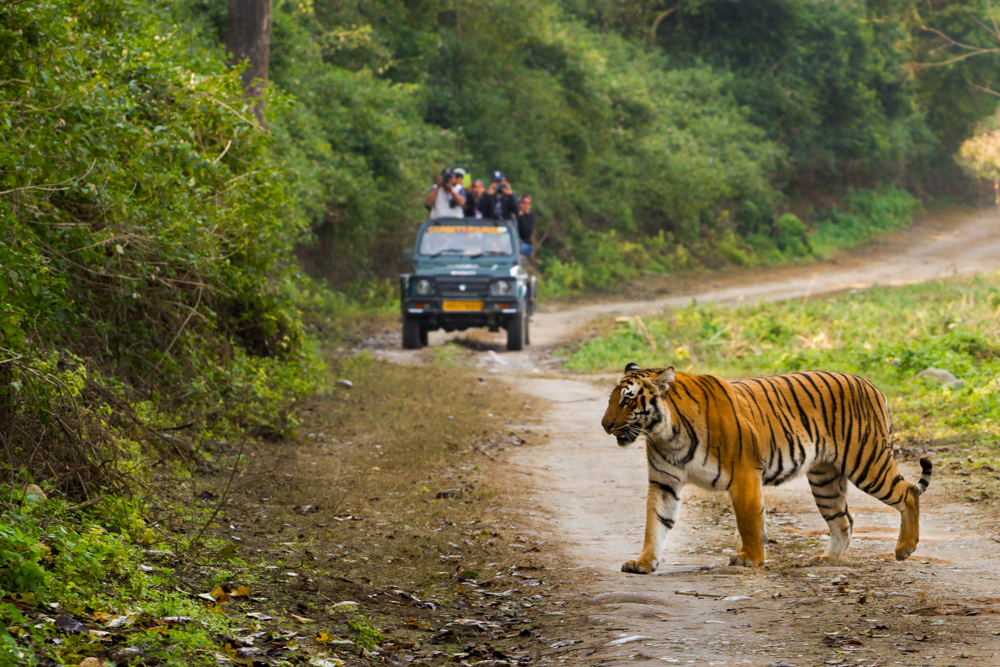Our essential tips for visiting Jim Corbett National Park, India’s legendary tiger reserve in the foothills of the Himalayas
The state of Uttarakhand in India, bordering China and Nepal, takes its name from the Sanskrit words uttara meaning ‘north’ and khaṇḍa meaning ‘land’. To Hindus, it’s known as Devbhoomi – the land of the gods – because of its cluster of high-altitude shrines shrouded in mist.
It is this convergence of spectacular natural landscapes and ancient mysticism that makes the northern land so appealing. Breathtaking pilgrimage sites and images of Shiva and Parvati are nestled in the folds of sacred peaks – including Nanda Devi, India’s second-highest mountain and the highest located entirely within its borders. Below the snowline, glistening mountain lakes, raging rivers and shrouds of thick jungle adorn the slopes.
It is this jungle that is a haven for the vast majority of the state’s renowned wildlife, particularly one of the world’s most iconic mammals, the Royal Bengal Tiger. Our tried-and-tested tips for visiting Jim Corbett National Park will give you the best chance of spotting these elusive creatures.
Jim Corbett National Park
India has 75% of the world’s wild tiger population with 3,682 recorded in the latest survey. Uttarakhand is home to around 560 of the big cats and, as such, offers one of the best chances to see these majestic animals in the wild.
Jim Corbett National Park in the Kumaon Hills of Uttarakhand is India’s oldest national park and its most legendary. It was established in 1936 initially as Hailey National Park and then Ramganga National Park until it was renamed in 1957 after famed tiger-hunter turned naturalist Jim Corbett, who put the region on the map with his 1944 book, Man-Eaters of Kumaon.
The Indian-born British soldier famously hunted several man-eating tigers and leopards in the subcontinent during the early 19th century. Later in his life, Corbett pivoted to conservationism and was instrumental in establishing India’s first national park which would later be renamed in his honour.
Around 260 tigers – up from 231 in 2020 – call the forests, marshes and grasslands of Jim Corbett home. There are also Indian elephants, mongoose, leopards, sloths, bears and deer here. While the woodland area is typically dense, there are swathes of open…
Click Here to Read the Full Original Article at Atlas & Boots…
